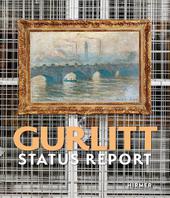
|
Gurlitt Status Report
Hardback
Main Details
Description
When over 1,000 artworks by outstanding artists of the modern era appeared on the scene in 2012, the find was celebrated as a sensation, though the suspicion that it might be art looted by the Nazis also reared its head. This extensive, lavishly illustrated publication documents for the first time a selection of works from the estate of the art dealer Hildebrand Gurlitt and examines the turbulent story of the 'Gurlitt art trove'. In addition to the presentation of the pictures, the estate of Cornelius Gurlitt (1932 - 2014), the son of the art dealer Hildebrand Gurlitt, is set in its historica l context by a prestigious list of authors, thereby ensuring transparency and enlightenment. One important topic is the provenance of the works, which in some cases were vilified by the National Socialist regime as "degenerate art". Which works in this col lection are looted art? Which ones were purchased legally, and which ones were acquired in forced sales? Another area of focus will be the biographies of Jewish collectors and artists who were the victims of art theft and the Holocaust. A further topic of investigation is how stolen works were returned to the museums and private collections after 1945. The official catalogue of the Kunstmuseum Bern and the Kunst - und Ausstellungshalle der Bundesrepublik Deutschland (Bundeskunsthalle) in Bonn permits for the first time a nuanced understanding of this case which is unique in the postwar history of Germany.
Author Biography
TheKunst- und Ausstellungshalle der Bundesrepublik Deutschland GmbH offers a richly varied program of exhibitions devoted not only to art and cultural history of all eras, but also to science, technology, and the environment. The KunstmuseumBern is the oldest art museum in Switzerland with a permanent collection and houses works covering eight centuries.
Reviews"Nearly four years after news of the discovery of the trove stunned the art world and stirred outrage over the fact that German authorities had kept its existence under wraps for months, the public will finally be allowed to view about 250 works selected from more than 1,200."-- "New York Times"
|